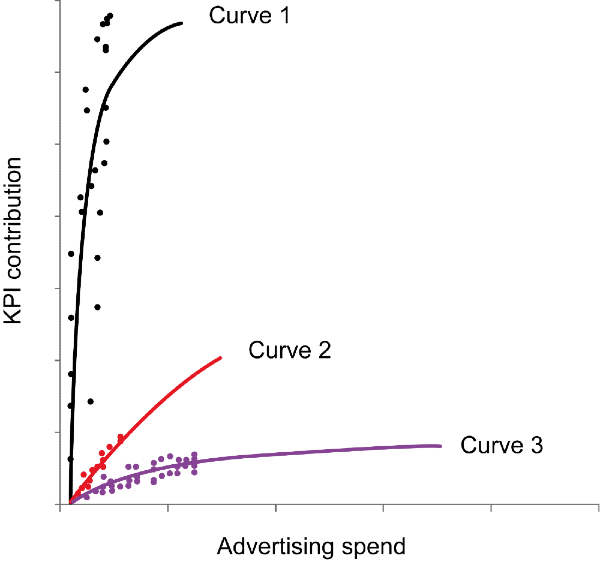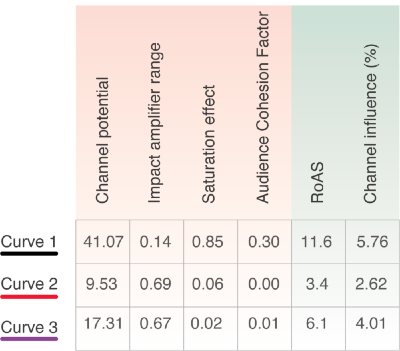Beyond Marketing Mix Modeling: A Modern Marketer's Garden
Revamping Marketing Measurement for the Digital Age

It has never been more difficult—or more important—to gauge the success of our advertising campaigns in today's lively digital world. From simple metrics like conversion tracking and click-through rates to more complex approaches like Marketing Mix Modeling (MMM) and multi-touch attribution, marketers have depended on a variety of tools and methodologies to measure their effectiveness.
Nevertheless, there has been a dramatic change in the marketing scene. Due to the rising complexity of customer journeys, fragmentation of audience attention, and proliferation of media, many mature measurement methodologies are no longer effective. Now we're not merely taking care of a garden patch; we're directing a huge, diverse ecosystem.
In light of this new reality, marketing measurement must take a broader perspective, moving beyond simple channel metrics or even conventional MMM. We require a model that can adjust to the dynamic digital environment, measure both the immediate and further effects of advertising campaigns, and take into consideration the gradual but ongoing development of brands.
Here we'll take a look at marketing measurement from a fresh perspective, with an eye toward developing the idea of Marketing Mix Modeling. We are presenting a new set of metrics and concepts that seek to transform the way we evaluate and enhance our marketing campaigns. These metrics and concepts are based on the latest AI developments and incorporate insights from complex systems theory.
Introducing a New Perspective
The hyper-fragmentation of the audience is a major problem for advertisers now. Traditional segmentation and positioning strategies are becoming excessively complex due to the influence of social media and the new dynamics of consumer behavior. In the marketplace today, segmenting customers into groups based on their age or "interests" is no longer a surefire way to reach them with relevant messages. Modern media consumption is multi-channel, which complicates user interactions with media and makes traditional marketing funnel analysis difficult to manage.
We propose integrating concepts from complex systems theory with marketing science to take an unconventional look at how consumers interact with advertising. Because AI is getting improved all the time, we can now make models that are both more complex and more effective in representing the reality of consumers, bringing new metrics that are more relevant. We will introduce these new metrics using a simple metaphor.
The Garden Metaphor
Imagine your marketing efforts as tending to a garden. Each marketing channel is like a different plant in your garden.
- Channel Potential: This is like the inherent quality of the soil for each plant. Some channels naturally have more potential to grow and produce results.
- Impact Amplifier: Think of this as how much each plant grows with a given amount of water (your marketing spend). Some plants (channels) will show dramatic growth with just a little water, while others need much more to show the same results.
- Saturation effect: This is like knowing when you've watered a plant too much. It helps you understand when increasing spend in a channel stops producing additional benefits.
- Audience Cohesion Factor: Imagine this as how well the plants in your garden work together. In some cases, plants complement each other, creating a beautiful, cohesive garden. In others, they might compete or clash.
A consumer-centric approach
- Channel Potential: When measuring the impact of a campaign in any given medium, we are actually measuring the message's impact on a specific audience. In other words, if we perform an MMM analysis to determine the influence of a media channel, we may be surprised to discover that its impact is significantly lower for the next campaign, especially if the message changes. As a result, we want to know what the potential of this channel is, no matter the message or segmentation we use. Still, this only represents the potential. Then we must seize the opportunity.
- Impact amplifier range: This metric allows us to figure out which channels have the greatest impact on consumer responses with minimal shifts in spending. It is an independent metric from the abive metric—the channel's potential. We can identify channels that have low potential but can still grow with minimum investment steps. At the end, the decision will be a balance between both metrics: the channel potential and its amplifying range. But, separately, they provide important insights.
- Saturation effect: This metric pertains to "saturation points" or known diminishing curves. Often, we default to accepting that a media channel has to have a saturation point or a range where we are getting diminishing returns, which is reasonable. But many MMM results effectively adapt our data to find a saturation point, wherever it may be. The reality is that most channels have such low investment data that they are far from reaching saturation. In real life, we need a metric that tells us the range of investment per channel as well as how likely it is to reach that saturation point and enter a less profitable zone. So far, we need to know that this saturation effect doesn't negatively impact us in our investment range (and a little bit beyond); hence, we need a measure that gives us the truth.
- Audience Cohesion Factor: This is a valuable metric for understanding our audience. This metric determines whether our audience is a "cohesive group" of consumers or divided into smaller groups; it measures the degree of fragmentation. This metric holds significant importance in advertising as it enables us to determine whether our message and communication style can effectively reach multiple consumer groups.
Into Practice
Let us imagine our three marketing channels as plants in our garden. We will use our new data to figure out how each "plant" performs and what this means for your marketing strategy.


Channel 1 (Curve 1): The Strong Oak Tree
🔹 Channel Potential (41.07): This is equivalent to having lush, fertile soil. Channel 1 has the most opportunity for growth and success.
🔹 Impact Amplifier (0.14) It is not the most water-efficient plant, but it grows steadily with more watering (spending).
Saturation Effect (0.85): This plant can absorb a lot of water before becoming oversaturated. You have room to spend more here.
🔹 Audience Cohesion Factor (0.30): It draws a reasonably diversified mix of "garden visitors" (audience).
🔹 Performance: The highest RoAS (11.57) and Channel Influence (5.76%), making it your top performer.
This suggests that this channel is your powerhouse. It has significant potential, can withstand increasing spending, and provides excellent returns. Consider making this channel a priority in your marketing mix.
Channel 2 (Curve 2): Fast-Growing Sunflower
🔹 Channel Potential (9.53): While the soil is not as rich, this plant should not be underestimated.
🔹 Impact Amplifier (0.69): It grows quickly with very little water. Small increases in spending can produce significant impacts.
🔹 Saturation Effect (0.06): It is far from overwatered. There is still room for progress.
🔹 Audience Cohesion Factor (0.00): It draws a hyper-fragmentd audience, similar to how a sunflower attracts pollinators.
🔹 Performance: Lowest RoAS (3.40) and Channel Influence (2.62%), but don't write it off yet.
While not your best performer, this channel responds effectively to small increases in spending. It's ideal for reaching a diverse audience, which could be useful for raising brand awareness or breaking into new markets.
Channel 3 (Curve 3): the steady evergreen
🔹 Channel Potential (17.30): Good quality soil with reasonable growth potential.
Impact Amplifier (0.67): Similar to Channel 2, it responds well to small increases in spend.
🔹 Saturation Effect (-0.02): The negative value indicates that it is approaching its saturation point. Be careful of overspending here.
🔹 Cohesion Factor (0.01): Has a reasonably diverse audience, but not as fragmented as Channel 2.
🔹 Performance: Moderate RoAS (6.12) and Channel Influence (4.01%).
This suggests that the channel's performance is balanced. It is more efficient than Channel 2, although it may have reached its growth limit. It's useful for establishing a consistent presence among a diverse audience.
Key Takeaways from Your Marketing Strategy
🔝 Prioritize Channel 1: It is your top performer with room for improvement. Think about increasing your investments here.
⬆️ Optimize Channel 2: It's ideal for efficiently reaching out to a diversified audience. Use it for broad reach or to test new markets.
➡️ Maintain Channel 3: It's a steady performer, but be wary of raising investment because it may be approaching saturation.
Remember, just like a good gardener, a smart marketer uses a variety of plants to create a thriving garden. Each channel has unique capabilities, and understanding these new measures allows you to nurture each one for best overall performance.
Cultivating Success: From Garden to Ecosystem
As we've seen, viewing our marketing channels through the lens of a garden can provide powerful insights. But let's take a step back and consider the bigger picture. Our marketing efforts don't exist in isolation; they're part of a larger ecosystem that includes our brand, our message, our customers, our competitors, and the broader market environment.
Just as a skilled gardener understands that a thriving garden is about more than just individual plants, a savvy marketer knows that true success comes from nurturing the entire marketing ecosystem.
This implies recognizing that simple, linear models of cause and effect often fall short in today's interconnected world. Be open to discovering unexpected synergies and ripple effects across your marketing mix. We need to balancing short-term and long-term. Like planting both annual flowers for immediate impact and perennial shrubs for lasting structure, balance your focus between short-term performance metrics and long-term brand building.
We need to adopt an adaptive management strategy. Just as a gardener must adapt to changing weather patterns, be prepared to adjust your strategies in response to shifts in the market, technology, or consumer behavior.
A resilient garden has a diverse range of plants. Similarly, a robust marketing strategy often involves a mix of channels and approaches, each playing a unique role in the overall ecosystem. The best gardeners never stop learning about their craft. Stay curious, keep experimenting, and be willing to prune what's not working to make room for new growth.
Conclusion: Tending Your Marketing Garden
As we've explored in this post, the world of marketing measurement has evolved far beyond simple metrics or traditional MMM. By adopting this new perspective—viewing our marketing efforts as a complex, living ecosystem—we open ourselves up to deeper insights and more effective strategies.
The metrics and approaches we've discussed here—Channel Potential, Impact Amplifier, Saturation Effect, and Audience Cohesion factor—are powerful tools in your gardening kit. They allow you to understand and nurture each "plant" in your marketing garden with precision and care.
But remember, even the most sophisticated tools are only as good as the gardener who wields them. Your expertise, creativity, and intuition remain crucial. Use these new metrics to inform your decisions, but don't be afraid to trust your instincts and take calculated risks.
The future of marketing measurement is not about finding a one-size-fits-all solution but about developing a nuanced understanding of your unique marketing ecosystem. By embracing this holistic, garden-inspired approach, you're well-positioned to cultivate marketing success in even the most challenging environments.





